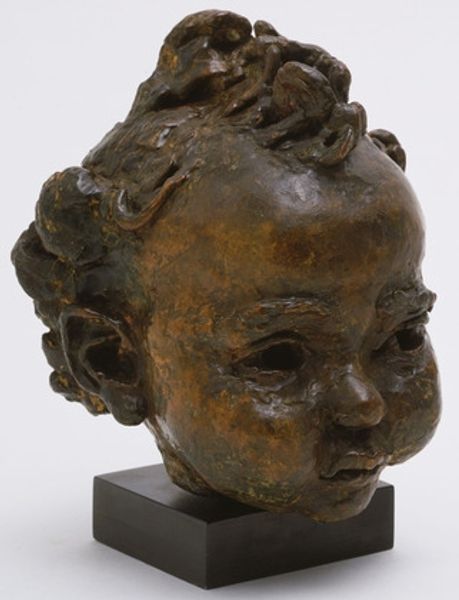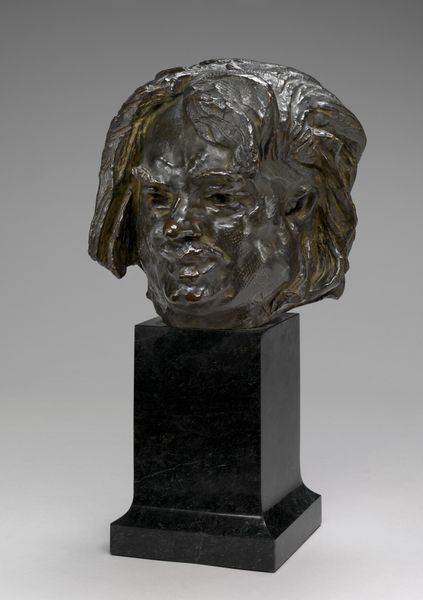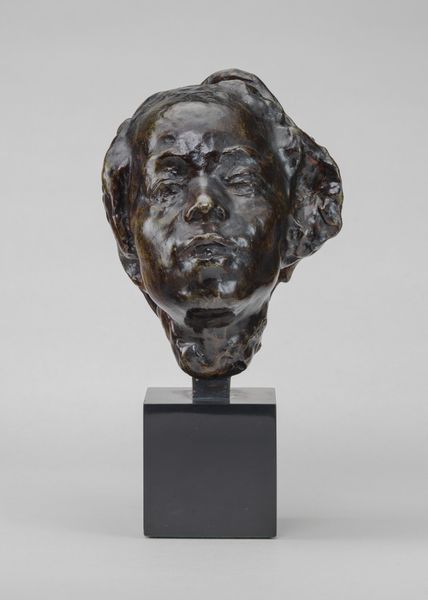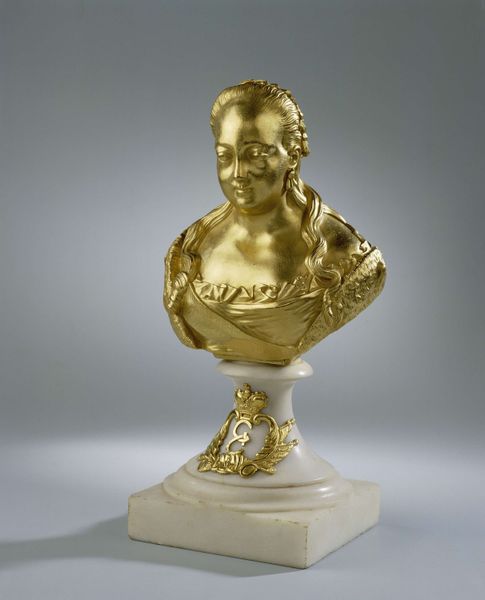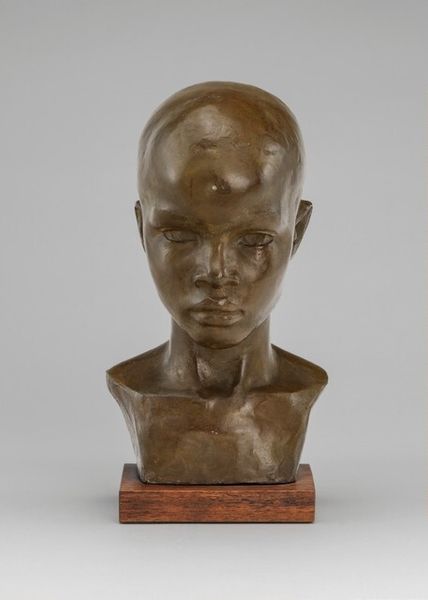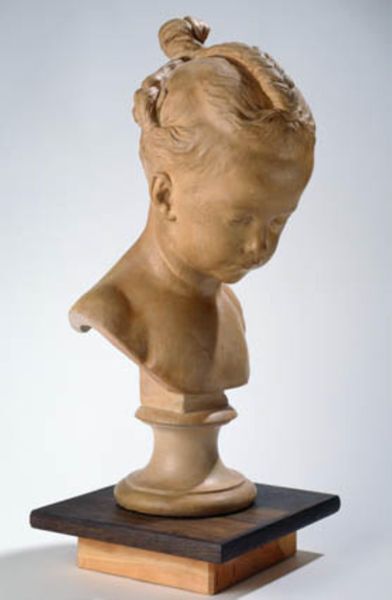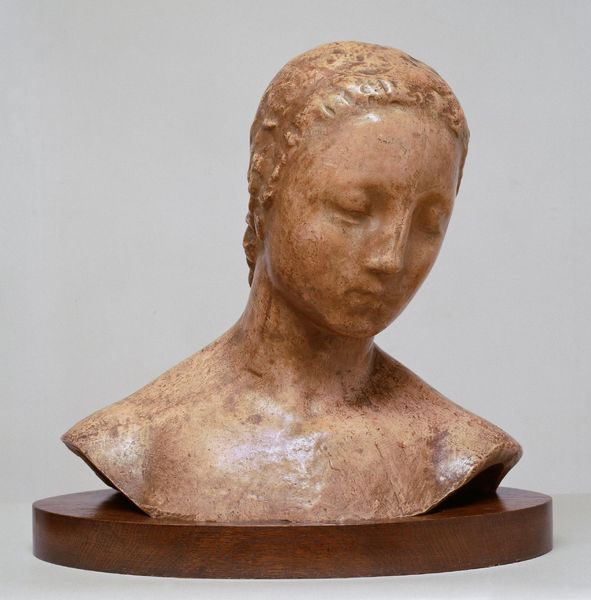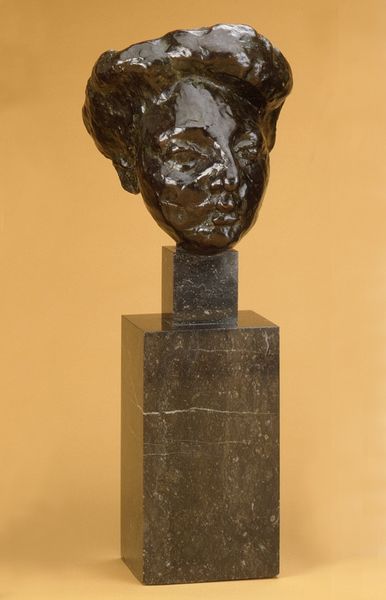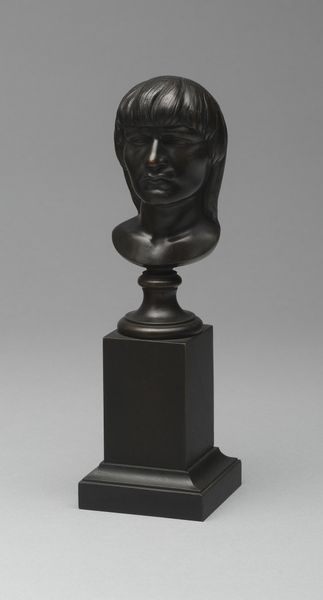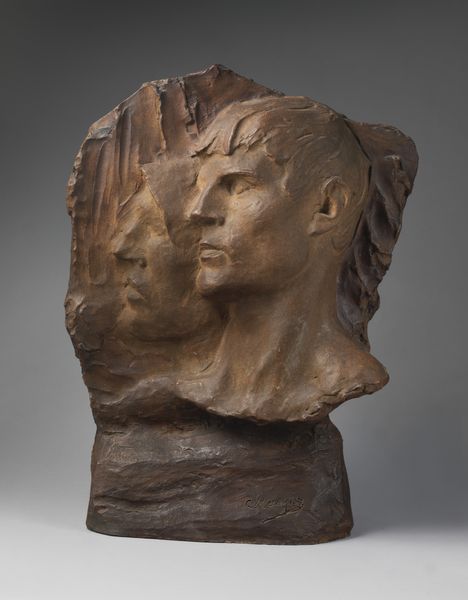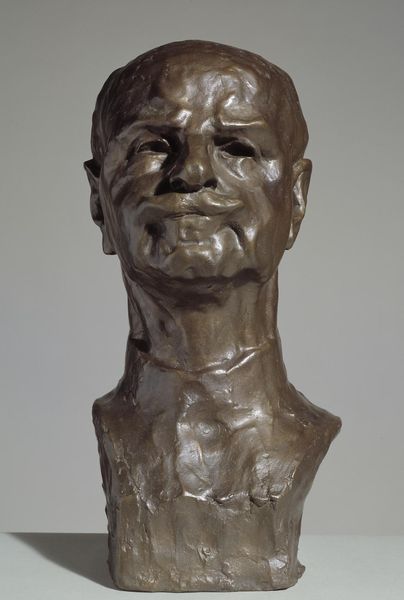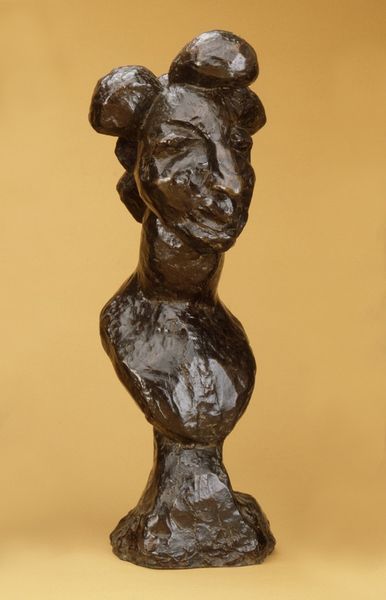
carving, metal, bronze, impasto, sculpture
#
portrait
#
carving
#
metal
#
sculpture
#
bronze
#
figuration
#
impasto
#
sculpture
#
italian-renaissance
Copyright: Public domain
Editor: Here we have Medardo Rosso's "Bambina che ride," or "Laughing Child," made around 1890, crafted in bronze. It has such a raw, immediate feel, like he's captured a fleeting moment. How do you see this work in terms of its historical and cultural moment? Curator: Well, consider the late 19th century's fascination with childhood, think of artists like Renoir and Cassatt. But Rosso breaks with that idealized vision. He gives us this intensely realistic, almost brutal, depiction. Think of the rising interest in psychology, in capturing authentic, unvarnished emotion. How do you see the reception of a sculpture like this diverging from more academic styles popular at the time? Editor: I see how it challenges conventional portraiture. Was it considered shocking at the time? Curator: Certainly, its rough, impressionistic surface clashed with the polished Neoclassical aesthetic that still dominated. Critics debated if it was "finished" art. However, Rosso was deliberately engaging with modern concerns about capturing movement and fleeting sensory experiences, very much aligning with the broader aims of Impressionism as a movement that was actively reshaping cultural sensibilities around visual art and its place in society. This was further reflected in the growth of the gallery system, creating new viewing conditions in general. Rosso challenges us to confront uncomfortable truths about representation and class. Editor: So, its value wasn't just aesthetic but also in how it redefined art's purpose? Curator: Precisely. It questions the institutional framework itself – what kind of art *should* be shown and *who* is it for? And what sociopolitical impact does that then have? It wasn't simply about beauty, but about power, perception and disrupting norms. Editor: I hadn’t considered how Rosso’s choices spoke to these larger societal dialogues. It is certainly much more than a pretty portrait!
Comments
No comments
Be the first to comment and join the conversation on the ultimate creative platform.
